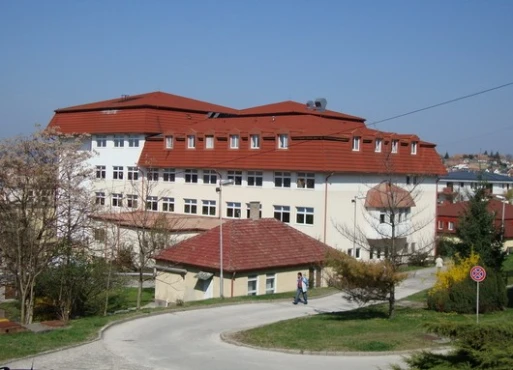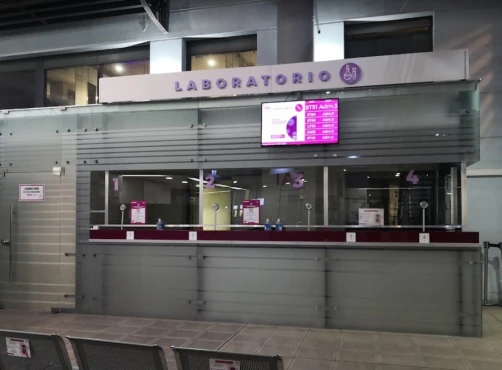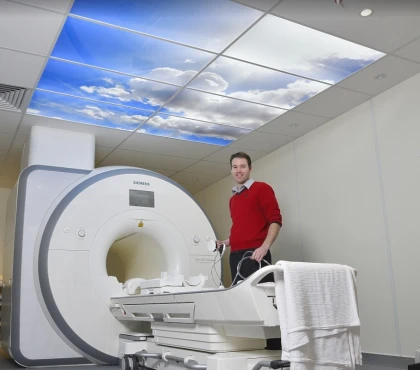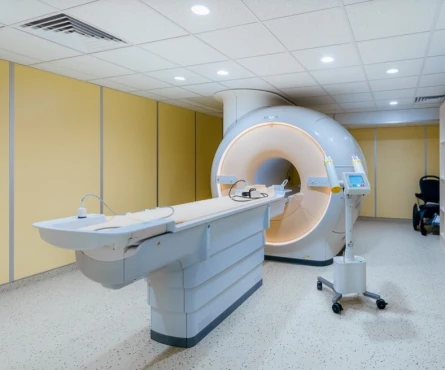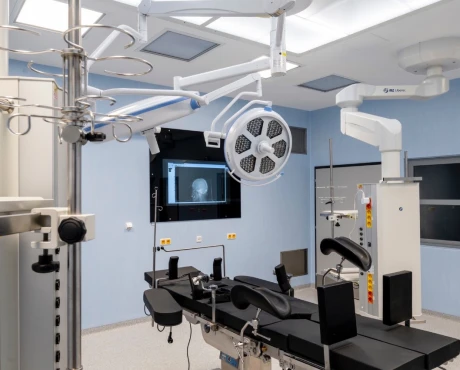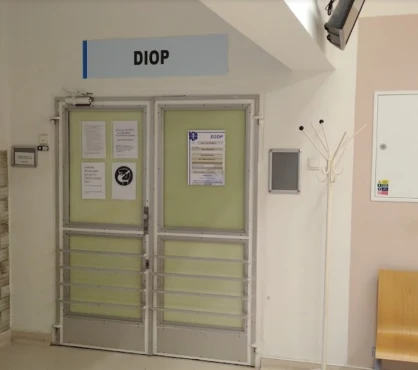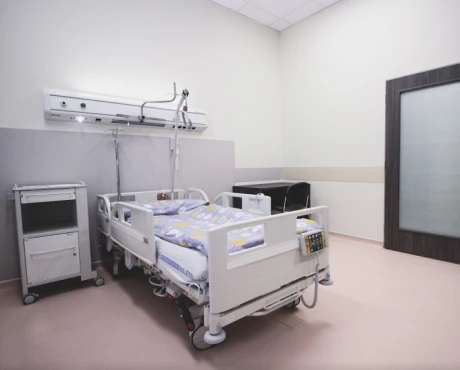Definition
Appendiceal cancer is a malignant tumor formed from the cells of the worm-shaped process of the cecum. It occurs primarily against the background of predisposing factors or develops with metastasis of oncological pathology of other localization. The disease runs for a long time without clinical manifestations; typical symptomatology occurs in the case of appendicitis. For diagnosis, ultrasound, CT, or MRI of the abdominal cavity, histologic analysis is used. Treatment includes radical or palliative surgery, adjuvant chemotherapy, and complex symptomatic therapy.
General information
Appendiceal cancer is one of the rarest pathologies in practical oncology. Its frequency is no more than 0.5% of all malignant neoplasms of the large intestine. According to the results of the study of removed appendixes, cancerous tumors become the cause of only 0.02% of appendectomies performed. However, the disease retains its relevance and requires oncologic vigilance from practicing surgeons who perform the initial examination and selection of treatment tactics for patients with appendicular symptoms.
Causes
Like other types of malignant neoplasms, appendix cancer does not have precise etiologic factors. The risk of pathology development increases in patients over 50 years of age, with a hereditary predisposition to colon cancer in the presence of Crohn’s disease with intestinal lesions of the terminal ileitis type. Additional risk factors include smoking, frequent constipation, an irrational diet with a predominance of fats, and a lack of vegetable fiber.
In a separate category is allocated metastatic cancer of the appendix, which occurs when the primary tumor spreads from other structures of the abdominal cavity and pelvis. The lesion of the appendix is observed in pancreatic cancer, gastric oncological pathology, and ovarian tumors in women. In the medical literature, several cases of metastasis to the appendix of malignant breast tumors in men and women are described.
Pathogenesis
The disease develops according to the classical laws of tumor growth, which include three consecutive stages: initiation, promotion, and progression. Appendiceal neoplasms are characterized by exophytic growth and mucus formation (in 50% of cases), which leads to obstruction of the organ lumen. This creates favorable conditions for the multiplication of pathogenic pathogens and the development of an acute inflammatory process—appendicitis.
Classification
Most often, appendix cancer is represented by epithelial tumors – carcinomas, which are divided into adenocarcinoma, mucinous carcinoma, and papillary cell carcinoma according to their histological structure. The second group of cancers is represented by neuroepithelial tumors. In clinical oncology, the modified TNM classification, which divides cancer into four stages, is widely used:
- Stage I. It is defined when the size of the primary appendiceal tumor is within 2 cm, and there are no metastases.
- Stage II. It is diagnosed when the cancer grows to 2-4 cm or more and sprouts into the cecum or ileum.
- Stage III. It is diagnosed when the tumor size is more than 4 cm, sprouting into the ileum and affecting regional lymph nodes, or when invasive growth of the neoplasm into the visceral or parietal peritoneum.
- Stage IV. It is defined as the presence of distant metastases of the tumor, regardless of the primary focus’s size and degree of invasiveness in the appendix.
Symptoms of appendix cancer
In the initial stages of the disease, when the tumor is small, there are no clinical manifestations. As the neoplasm progresses, nonspecific symptoms are possible, such as discomfort in the right iliac region, contraction-like pain, and stool instability. Systemic effects of the oncologic process include deterioration of appetite, decreased performance, and weight loss for no apparent reason.
Acute symptomatology develops when the disease is complicated by appendicitis. The main sign is pain, which initially occurs in the projection zone of the appendix or migrates from the epigastrium, periapical region. After 1-2 hours from the onset of pain, the syndrome is joined by nausea and vomiting. There is a delay in stool and gas, increased body temperature, and complete food refusal. In the destructive form of appendicitis, the intoxication syndrome is pronounced.
Complications
The most formidable consequence of appendix cancer is regional and distant metastases. Metastasis is due to the lymphogenic and hematogenous pathway of malignant cell spread. When the tumor is located in the proximal 2/3 of the process, secondary foci appear in the lymph nodes at its base and along the course of the right colon. New tumors from the distal part of the organ metastasize to the lymph nodes of the mesentery.
Distant metastases of appendix cancer can be found in the liver and adrenal glands in women – in the right ovary. Pathognomonic for appendiceal oncologic pathology is metastasis to the peritoneum by the type of carcinomatosis. Patients develop pseudomyxoma of the peritoneum, the primary clinical manifestation of which is ascites. With a large diameter of the primary tumor focus, mechanical intestinal obstruction is possible.
Diagnosis
Patients with pain in the region of the vermiform process are immediately referred to a surgeon with suspicion of acute appendicitis. The initial examination includes collecting complaints and anamnesis and palpating the abdomen to check pathognomonic symptoms. The scope of the diagnostic program and the terms of its implementation are determined individually, taking into account the patient’s condition. The following methods are used to make a diagnosis:
- Ultrasound of the abdominal cavity. The study is carried out as a screening method to confirm or exclude appendicitis and assess the state of the right ovary in women. According to the sonography results, nonspecific signs of inflammation can be identified, but the diagnosis cannot be verified.
- CT scan of the abdominal cavity. Radiological diagnosis can detect a dilated and filled-with-content appendix, which is characteristic of tumor lesions of the organ. CT is supplemented with MRI to clarify the pathological focus’s size and localization.
- Oncomarker tests. According to the principles of oncological vigilance, patients with unclear symptoms and suspicion of malignancy are prescribed tests for markers REA, CA 19-9. An increase in these indicators is not an absolute sign of oncology and is used in the complex diagnosis of appendicular cancer.
- Histologic examination. After surgery, the diagnosis is morphologically verified based on the analysis of the removed preparation. The study specifies the cellular composition, the degree of tumor differentiation, and the distance to the proximal and distal edges of resection. If indicated, immunohistochemical and molecular-genetic clarifying analyses are performed.
Differential diagnosis
Appendix cancer is an intraoperative diagnosis since verification of the disease before its surgical removal is difficult due to the lack of specific criteria. Differential diagnosis of neoplasm is carried out with benign appendicular tumors, acute appendicitis, and appendicular infiltrate. In women, ovarian neoplasms and other pathologies of the reproductive system organs must be excluded.
Appendix cancer treatment
Surgical treatment
All cases of appendicular cancer require surgical removal of malignant tissues. Right-sided hemicolectomy is recognized as the operation of choice. At stages II-III, when the cancer is resectable, such intervention is radical and gives chances for a recurrence-free cure. In stage IV appendicular cancer, palliative interventions are indicated, such as bypass anastomosis or stoma removal to normalize fecal passage through the intestine.
Adjuvant chemotherapy
Chemotherapy is used as second-line treatment in patients with inoperable forms of appendix cancer and the presence of factors of unfavorable prognosis after radical surgery. The low degree of cell differentiation, the presence of lymphovascular or perineural invasion, and the impossibility of adequate lymphatic dissection are indications of pharmacotherapy. Chemotherapy is prescribed for six months.
Symptomatic therapy
All patients with appendix cancer require a complex of supportive treatment aimed at eliminating the concomitant manifestations of the disease and improving the quality of life. Of particular importance is rational analgesic therapy, which, in addition to analgesics, may include remote irradiation and locoregional anesthesia. On the indications, antiemetics, drugs of digestive enzymes, are prescribed.
Prognosis and prevention
The 5-year survival rate after radical hemicolectomy with lymph node dissection is 60%. Patients are dynamically monitored with visits to the oncologist every 3-6 months during the first two years after the end of treatment. In the absence of recurrences, the schedule of examinations is set individually. Given the different etiology and complex pathogenesis of appendicular cancer, effective preventive measures have not been developed.



































